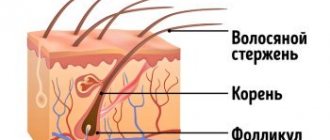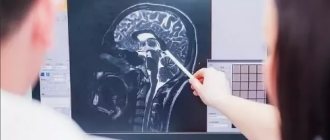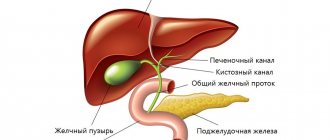general information
Alopecia is a pathology characterized by hair loss on any part of the body.
Most often we are talking about hair loss in the scalp area. Although this condition does not threaten the child’s health, an obvious cosmetic problem becomes a factor of psychological and emotional stress. Because of this, childhood alopecia requires a comprehensive approach. Often, doctors need to involve a psychotherapist to treat the consequences of this disease. It is important to understand that, unlike age-related alopecia, hair loss in children is reversible in 95% of cases. Eliminating the root cause of the disease allows you to quickly restore the condition of the skin. Alopecia in children is a common condition. Typically, a child’s hair loss does not follow the male pattern: the pathology affects the follicles of the entire area of the scalp, and not just the temporo-frontal area. This may be a congenital or acquired condition. In most cases, we are talking about a complication of some disease. The occurrence of alopecia in infants may indicate a metabolic disorder affecting the development of the central nervous system. In this regard, diagnosis must be carried out as early as possible.
Existing types of illness
- Physiological alopecia. Localized on the temples, back of the head. It is observed in infants in the first months of life due to constant friction against the pillow. Treatment is not required because the disease will go away when the child stops lying down all the time.
- Anagen. Associated with drugs used to treat cancer.
- Hereditary. Appears in a child if his parents also had this pathology.
- Congenital. It is one of the symptoms of a congenital pathology or defect. Quite rare. Occurs against the background of endocrine, skin diseases, etc.
- Telogen. Develops due to sudden weight loss, surgical interventions, past illnesses against the background of elevated body temperature.
- Focal or nested (baldness). Serves as a symptom of disorders in the functioning of the immune system. The lesion is local, that is, separate areas of baldness form on the head. This form of alopecia affects one child in a thousand. Source: N. Bekbauova, R. Aliyeva, Zh. Zharasova, O. Stepanova Etiology of alopecia areata in children // Medical Journal of Western Kazakhstan, 2012, No. 3(35), p.90
- Diffuse. The most common type. Represents a uniform loss of hair from 150 per day.
- Seborrheic. Develops due to seborrhea.
- Universal. Loss of hair all over the body.
- Broca's pseudopelade, or atrophying alopecia. Hair loss occurs in the forehead and crown areas. This is a rare pathology among children, usually affecting women over 35 years of age.
Hair and skin
The skin is an independent organ that performs various functions. This structure is necessary to protect internal organs, thermoregulation, external respiration and maintain metabolism. Hair is a derivative of skin. Follicles containing the growth zone of hair shafts are located in the middle part of the skin (dermis). As the hair grows, it gradually overcomes the epidermis layer and comes out.
To fully understand the mechanism of hair loss in children, it is necessary to have a basic understanding of the normal growth of these structures. Normally, the growth cycle is divided into four phases: the period of active growth, the transition phase, the period of rest and loss of old hair. Typically, 85-95% of hair shafts are in the active growth phase, which lasts 3 years. Less than 1% of hair is in a transitional state. The period of old hair loss begins with the growth of a new shaft. Alopecia can disrupt any stage of follicular activity.
Causes
Pathological hair loss is the result of the influence of certain negative factors on the follicles. This could be a metabolic disorder, a hereditary trait, skin inflammation, or another condition.
Possible reasons:
- Lack of substances necessary for the follicle to function. Usually we are talking about a deficiency of zinc, folic acid, copper, chromium, selenium and copper. Normally, all these vitamins and microelements enter the body with food. Accordingly, poor nutrition is the main cause of deficiency of useful components.
- Pathologies of the immune system. The immune system is necessary to protect the body from external factors, such as pathogens, but some reactions of this system lead to damage to healthy tissue. Alopecia can occur due to allergic and autoimmune reactions.
- Ringworm. This is a fungal infection that causes hair loss and skin deformation. In the scalp area, the alopecia lesion may have a round shape.
- Hypothyroidism, in which the thyroid gland does not produce enough hormones. This endocrine disease causes dry skin, weakness, fatigue and hair loss.
- Taking certain medications that affect the follicles. For example, chemotherapy for cancer can cause alopecia.
- Skin injuries: burns, bruises, self-pulling of hair due to neurosis.
- Infectious and inflammatory processes in the skin with damage to the dermis. These are various forms of pyoderma, staphylococcal infection and other conditions.
Thus, a large number of diseases of the skin and internal organs cause alopecia.
Causes
The most common causes of baldness:
- congenital pathologies, including infantilism;
- heredity;
- disorders in the immune system;
- chemotherapy;
- surgical operations;
- weight loss,
- non-compliance with vitamin balance - first of all, a lack of vitamin B12 and folic acid in the body, as well as microelements (chromium, selenium, copper, zinc, molybdenum);
- high temperature and general intoxication of the body;
- injury to hair follicles due to tight hairstyles.
In newborns and infants, alopecia, if the doctor has ruled out genetic defects, most often occurs for two reasons: the manifestation of rickets and constant rubbing of the head on the pillow.
Children over 3 years old begin to actively communicate with peers, adults and animals. Sometimes infection with fungal diseases occurs, for example, ringworm (trichophytosis, microsporia), which can lead to the development of alopecia. At the age of 6-7, children go to school. At this time, the load on the nervous and immune systems increases, which can also cause alopecia.
Symptoms
Usually hair falls out and stops growing on the head - this is total alopecia. Alopecia universalis occurs on the face and entire body. Total alopecia also leads to loss of eyebrows and eyelashes.
At a young age, baldness is more often diagnosed. Pathology of the integument - alopecia areata in children - is characterized by bald clearings. They are natural in color, smooth to the touch, and do not have plaques or scales. Can occur in as little as one night.
If treatment is not carried out, the lesions merge and form a single extensive oval-shaped bald spot. Thinning hair around such areas is easily pulled out because the follicles are weakened. Naturally, the affected area also increases.
Alopecia in children is also manifested by deformation of the nail plate. It becomes dull in color. Grooves and dimples appear on the surface. In this case, the patient does not feel any discomfort.
Atrophying baldness manifests itself as small, darkened lesions in the frontal and parietal zones. Often these areas connect and form zones that look like flames. The skin in the affected areas is smooth, without scars or plaques. The main feature of such a lesion is that the cover cannot be restored.
Physiological baldness often occurs in children in the first year of life. A bald spot on the head of an infant in the back of the head occurs due to constant friction.
Baby curls return over time without treatment.
Congenital pathology is quite rare. It is characterized by the absence of some hair follicles, and therefore, in certain areas of the scalp there is a complete absence of vegetation.
Risk factors
Dermatologists believe that the etiology of childhood alopecia is not limited to mechanisms of follicular damage. It is also necessary to take into account the forms of predisposition to such a disease associated with heredity, lifestyle and the individual history of the child.
Known risk factors:
- Diseases of the gastrointestinal tract that impair the absorption of nutrients. First of all, these are gastroduodenitis, dysbacteriosis and reflux disease.
- Nutrition that does not meet the needs of children. The child's diet should be rich in microelements.
- Unfavorable family history. Congenital forms of alopecia can be inherited.
- Psychological condition. Neuroses, anxiety disorders, chronic stress and other mental pathologies can affect the condition of the skin.
- Diseases of the central nervous system.
- Blood pathologies, such as lack of hemoglobin (anemia).
- Chronic skin diseases.
- Diseases of the cardiovascular system.
Taking into account risk factors helps to carry out preventive measures.
Classification
The forms of the disease may differ in the causes of occurrence, clinical course and nature of hair loss.
Main types:
- Congenital alopecia is a rare condition associated with genetic disorders. As a rule, this pathology is accompanied by impaired development of the skin and endocrine disorders.
- Pseudoalopecia of the first year of life is a physiological condition manifested by hair loss in newborns. After some time, the follicles produce new rods.
- Patterned hair loss. The child develops a clearly defined area of baldness.
- Total alopecia is hair loss in all areas of the body. It may also be the absence of hair follicles in the skin.
During diagnosis, a dermatologist will determine the type of baldness based on external signs.
Alopecia
Fungus
Syphilis
Chicken pox
19319 November 16
IMPORTANT!
The information in this section cannot be used for self-diagnosis and self-treatment.
In case of pain or other exacerbation of the disease, diagnostic tests should be prescribed only by the attending physician. To make a diagnosis and properly prescribe treatment, you should contact your doctor. Alopecia: causes, symptoms, diagnosis and treatment methods.
Definition
Alopecia is a pathological partial or complete loss of hair on the head, face and/or other parts of the body, resulting from damage to the hair follicles.
Normally, a person loses up to 100 hairs per day. Losing more hair is considered pathological and can lead to partial or complete baldness.
Hair consists of a visible part (shaft) and a root located in the hair follicle (hair follicle). There are approximately 100,000-150,000 follicles on the human head, in which hair growth occurs.
It is customary to distinguish three stages of hair growth:
1st phase - anagen, when the hair grows continuously; the duration of this phase is from 2 to 5 years;
2nd phase - catagen, when hair growth stops and the hair follicle prepares to enter the resting stage; the duration of this phase is 3-4 weeks;
3rd phase - telogen, when the hair separated from the root moves to the surface and falls out, and the follicle rests and prepares to produce new hair; The duration of this phase is 2-4 months.
Normally, approximately 80-90% of human hair is in the anagen phase, 1-2% in the catagen phase and the rest in the telogen phase.
Classification of alopecia
It is customary to distinguish scarring and non-scarring alopecia.
Scarring alopecia is characterized by complete destruction of hair follicles with the formation of fibrous tissue in their place and the impossibility of hair regrowth.
Non-scarring alopecia:
- nested
- manifested by hair loss in a limited area (usually on the scalp) without the formation of scar tissue in the affected areas. Alopecia areata can be local (focal), band-like (marginal), subtotal, total and universal - with damage to the nail plates; - diffuse
(symptomatic, toxic alopecia) - a disease characterized by widespread diffuse hair loss associated with a violation of the physiological change in the phases of their growth; - androgenetic
- a disease associated with a genetically determined disorder of androgen metabolism in the scalp; usually baldness affects the parietal and frontal areas; - seborrheic
- occurs against the background of seborrhea (an inflammatory disease caused by an increase in sebum secretion and a change in its composition).
Causes of alopecia
The causes of scarring (irreversible) alopecia may be hereditary disorders; mechanical or thermal injuries to the skin; fungal (trichophytia, favus), bacterial (tuberculosis, syphilis, etc.), protozoal (leishmaniasis) or viral (shingles, chicken pox) diseases; neoplasms (squamous cell carcinoma); various dermatoses (scleroderma, Hoffmann's folliculitis, etc.).
Alopecia areata can be a consequence of diseases such as malaria, syphilis, shingles, fungal infection, HIV infection. With mycobacteriosis, even a minor injury contributes to infection of the scalp, and after 2–3 weeks the hair becomes brittle. Staphylococcal skin lesions are determined when hair grows into the skin.
Diffuse alopecia develops during pregnancy and lactation, with hypothyroidism, malignant neoplasms, and syphilis. Stress plays a significant role in the formation of the disease. Etiological factors contributing to the occurrence of diffuse alopecia include radioactive radiation, chemotherapy, exposure to strong poisons, long-term use of medications (antibiotics, antipsychotics, antidepressants, etc.).
With insufficient nutrition, the body can develop a deficiency of not only protein, but also essential microelements: iron, zinc, copper, chromium, sulfur, selenium, magnesium, potassium, silicon, which also does not have the best effect on the condition of the hair.
Androgenetic alopecia is associated with dysfunction of the endocrine glands (diseases of the adrenal glands, sclerocystic ovarian syndrome, etc.) and genetic factors.
Seborrheic alopecia is a complication of seborrhea. It develops in approximately 25% of people, usually beginning during puberty and reaching its maximum severity by age 25.
Alopecia symptoms
Scarring alopecia begins with the appearance of small patches of baldness in the parietal or frontal areas. The process may be accompanied by redness of the skin. In unaffected areas, hair is usually not changed, but is easily removed along the periphery of the lesions. At a later stage, significant fibrosis is observed in the dermis.
Another type of cicatricial alopecia is Hoffmann's abscess folliculitis. The disease is characterized by multiple deep and superficial abscesses, which, when healing, turn into rough, often keloid scars.
Alopecia areata is manifested by rounded lesions of varying sizes, devoid of hair. The process is most often localized on the scalp, but can affect eyebrows, eyelashes and other areas of the skin (in men, the beard and mustache growth area). At first, the areas of baldness are small (up to 1 cm in diameter) with normal skin (sometimes short-term redness is observed). Then they enlarge, new ones appear, merge with the old ones, forming large areas of baldness, along the periphery of which there is hair in the form of an exclamation mark - narrowed at the base and thickened towards the end. After a few weeks or months, hair growth may resume in the original lesion, which does not exclude the appearance of new lesions. The growing hair is initially thin and unpigmented, but gradually it regains its structure and color.
Androgenetic alopecia is characterized by the replacement of normal hair in the temporo-frontoparietal region with gradually thinning vellus hair, which shortens over time and loses pigment. First, bald patches appear in the temple area, then the parietal region is involved in the pathological process. The Norwood scale is used to determine the degree of male pattern baldness, and the Ludwig scale is used to determine the degree of hair thinning in women.
With seborrheic alopecia, the hair becomes oily and sticks together. Yellowish scales can be seen on the hair and skin. A person often complains of itching. The disease is characterized by a shortening of the anagen stage, which causes premature hair loss, thinning and replacement with vellus hair. Baldness usually begins from the edges of the forehead to the back of the head or from the crown to the forehead and back of the head. Along the edges of the bald spot there are always tightly-set hairs.
Diagnosis of alopecia
Laboratory and instrumental research of alopecia includes a wide range of tests:
- clinical blood test: low levels of hemoglobin and red blood cells indicate the presence of anemia, an increase in the red blood cell index indicates B12 and folate deficiency conditions; an increased level of leukocytes and neutrophils can be observed in the presence of an infectious focus in the body;
Symptoms
Signs of alopecia are not always limited to loss of hair. Often, the patient experiences additional symptoms due to the underlying cause of baldness.
Possible symptoms and signs:
- reduction in hair thickness (thinning);
- decreased density of follicles (thinning);
- active loss of hair shafts during shampooing;
- burning and itching of the skin;
- focal baldness in the scalp area;
- hair bleaching;
- skin hyperpigmentation;
- the appearance of skin rashes;
- nail deformation;
- peeling of the skin;
- oily skin;
- weakness and fatigue.
If there is an acute skin infection, the child may develop a fever. Chronic fungal and bacterial infections can have a hidden course.
Diagnostics
If characteristic symptoms of baldness appear, you should make an appointment with a pediatric dermatologist. The doctor will ask the child about complaints and review medical history to look for risk factors for alopecia. Then the damaged areas of the skin are examined. The appointment of laboratory and instrumental examinations allows you to make an accurate diagnosis and begin treatment.
Additional diagnostics:
- Phototrichogram – assessment of the condition of the follicles in the area of hair loss. The doctor shaves off a small amount of hair shafts and obtains a magnified image of the skin using a special device. The results of a phototrichogram give the dermatologist the opportunity to judge the activity of the follicles. The test is carried out several times to assess the dynamics of baldness.
- Dermatoscopy is a standard method for examining the skin. Using an optical device, the doctor examines a magnified image of the affected area of the skin. The results of dermatoscopy allow for differential diagnosis of visible skin lesions.
- Blood analysis. In the treatment room, a nurse draws venous blood. To clarify the cause of the disease, the doctor will need data on the quantity and ratio of formed elements, the concentration of hormones and microelements. A blood test can also help rule out autoimmune disease and acute infection.
- Scraping a suspicious area of skin. The resulting material is examined in the laboratory using a microscope and microbiological samples. The results of this examination can detect a fungus, bacterial infection, or other disease. If necessary, a full biopsy is performed.
- Gastroenterological examinations: gastroscopy, ultrasound of the abdominal organs and thyroid gland, stool analysis.
- Serological diagnostics of blood to identify the causative agent of infection.
Dermatologists often need to conduct a large number of tests to determine the cause of childhood alopecia. Difficult diagnosis is justified by the need to select effective therapy. If there are additional indications, the dermatologist prescribes a consultation with a mycologist, infectious disease specialist, endocrinologist or other doctor.
Diagnosis of baldness (alopecia) in children
If you notice signs of baldness in your baby, contact your pediatrician for a referral to the following specialists who work with children:
- Gastroenterologist: if indicated, the doctor conducts a full examination of the gastrointestinal tract, prescribes an analysis for dysbiosis and the presence of parasites in the intestines, refers to an ultrasound of the abdominal cavity, and prescribes tests to exclude vitamin deficiency.
- Endocrinologist: examines the level of TSH, T4, thyroid hormones and the stress hormone, cortisol. If the indicators deviate from the norm, hormonal therapy may be prescribed.
- Neurologist: determines the presence of certain deviations from the norm in the development of the child’s nervous system.
- Dermatologist: takes a scraping of the scalp for the presence of a fungal infection, conducts a trichogram and computer diagnostics of the skin, and does a spectral analysis of the hair.
Treatment
The method of therapy depends on the identified cause of baldness, the age of the child and concomitant diseases. In most cases, eliminating the root cause of the disease allows you to restore the integrity of the hairline. Permanent damage to the follicles occurs only with deep skin lesions and congenital conditions.
Treatment options:
- Eliminate infection with antibiotics and antifungals.
- Therapy of diseases of the gastrointestinal tract.
- Normalization of diet. In addition to a proper diet, your child may need supplements of folic acid, zinc and other microelements.
- The use of physical therapy, such as ultraviolet irradiation of the scalp.
- Prescription of topical corticosteroids and other anti-inflammatory drugs.
- Cosmetic skin care: wash your hair at least 2-3 times a week using baby shampoos and skin masks.
- Follicle transplantation for irreversible hair loss.
Prevention of alopecia in children includes timely treatment of skin diseases, proper nutrition, treatment of neurosis and adherence to personal hygiene rules. Most often, the prognosis is favorable: doctors are able to quickly eliminate negative factors and normalize the functioning of the follicles. For more accurate information, it is recommended to make an appointment with a dermatologist.
Recommendations for patients
- Avoid mechanical trauma to hair when washing and combing.
- Avoid tight hairstyles.
- Eat fully and balanced.
- If necessary, do not be afraid to correct with a wig or hair replacement system.
- Some men (and women) prefer shaving to treatment.
- Do not forget about photoprotection; a hairless scalp is not protected from exposure to sunlight.
- Be careful with coloring, young growing hair may turn a different color.
- Be careful with extensions, artificial eyelashes and eyebrows, tattooing, and the use of masking fibers.
- Psychological and informational support can be obtained from special resources on the Internet and in communities for patients with alopecia areata. If you need specialized help, see a psychotherapist.









